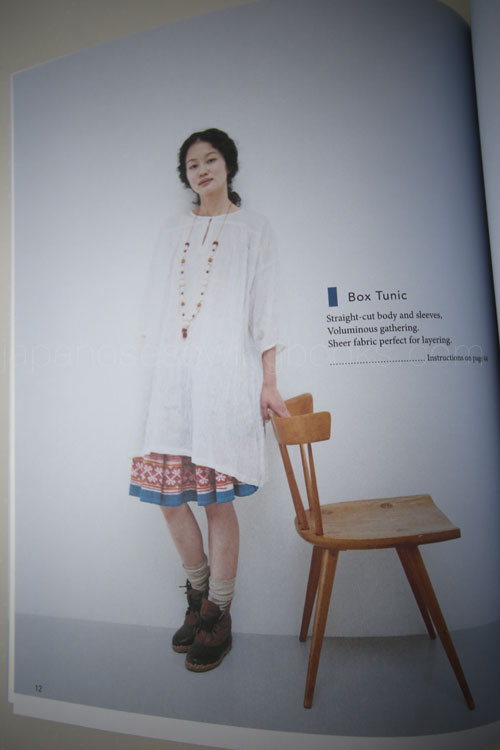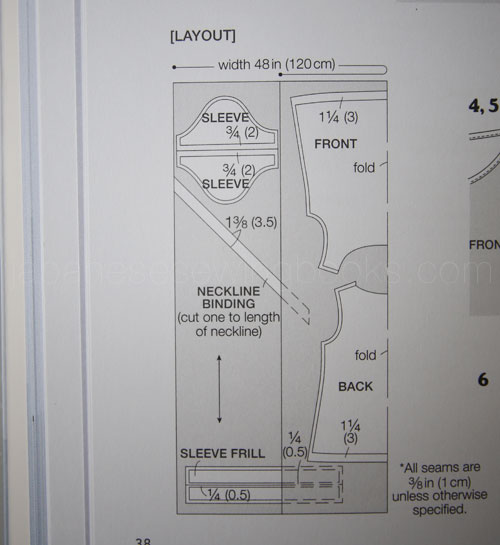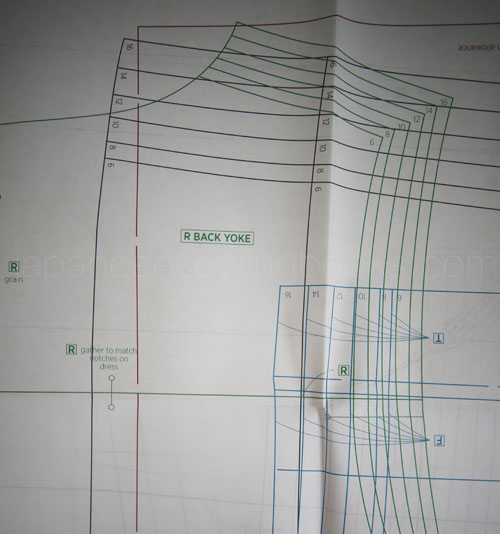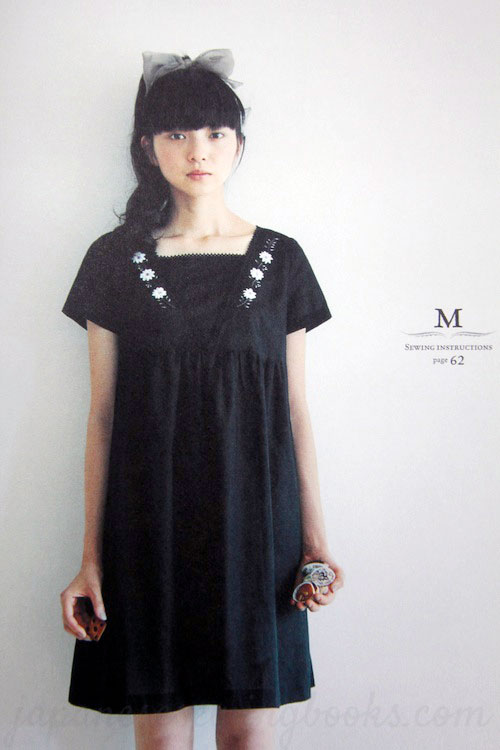Look what I found in my mailbox last week!
The very kind folks at Laurence King who sent me review copies of Stylish Dress Book and Feminine Wardrobe sent me this book last week. A great mood-lifter for me given that I have been “bugged” by the flu bug for the past two weeks. The funniest thing is that I didn’t catch it, but everyone else at home took turns with it which meant lots of TLC had to be dished out, and lots of cooking and cleaning too.
Back to the book. This book was originally due for release in September on Amazon, but I just checked, and it’s already available for order !
This book contains patterns for 23 different outfits, based on variations of 6 simple patterns. I thought it meant less tracing, but the actual pattern pieces for each individual outfit is still different and will have to be traced out separately. Let’s have a look!
This is the same top as the one on the cover. It has an interesting ribbon tie back detail.
The same pattern as A but with modified sleeves and ruffle details. The front of the neck is also made with ruffles instead of pleats. It is a totally different blouse despite originating from the same pattern isn’t it?
I really like this cape collar blouse which will be really lovely in a soft, slightly sheer and flowy fabric. Maybe Liberty. If only I can bear to splurge on it.
Same pattern (II) as the cape collar blouse!
Another blouse using pattern II. Lots of ruffly details on this one.
Pattern III is more of a straight cut pattern design. The design above includes a button placket, and can be worn either front to back, or back to front.
The more common kimono tunic using pattern III.
Pattern IV is quite a simple flare pants pattern, but can be modified to produce a short playsuit or a long jumpsuit like this one!
This tie-neck camisole uses a raglan sleeve pattern (Pattern V) and is really pretty. I am thinking seriously of making this one but without the organza layer.
Here’s one outfit made with the same pattern but with sleeves.
I really had to say something about this one. I didn’t like it at first glance, but when looking at the how-to-make section, I realized it was a sheer georgette fabric (in black) paired with a floral fabric for a sweetheart bodice dress. The pattern looks pretty enough but I think the main problem lies with the high waistline. It looks too wide and should be taken in a little bit more? Or is it due to the print or the weight of the fabric? It looks a little frumpy here doesn’t it?
Another pretty blouse using Pattern VI. This fabric, I like 🙂
Really cute outfit. The patterns for the entire dress + ribbon tie + petticoat with hem ruffle are included.
A very pretty bell-sleeve coat dress, also using pattern VI.
Now for some important information. The patterns in the book are meant for the following sizes. XS-L. Units are mainly in inches, with cm equivalents in brackets.
This book also includes 4 pages of Basic sewing techniques, with step by step photographs to guide you along.
Just a small excerpt from the sewing techniques section so that you can see what the instructions are like.
The instructions include
- Marking up a pattern piece
- Threefold and double fold hem
- Making bias binding
- Using bias binding to add piping
- Using bias binding to create a facing-like finish
All the pattern how-to-makes look like this. Pretty standard, with instructions, cutting layout, main diagram with steps, and individual diagrams for each step. But some of the patterns, like the one below, has step by step photographs as part of the instructions.
A closeup look at one of the photographs.
A sample sewing diagram.
There are 2 large size pattern sheets with a plastic envelope for storage. Really love how all the English translated books have this, I am always getting my Japanese ones mixed up because I just insert them between the pages and they tend to slide out easily.
A bonus item! Cupcakes recipe!
Title : Sweet Dress Book
Author :Yoshiko Tsukiori
ISBN : 978-1780671086
Publisher : Laurence King
Buy now from : Amazon











































































